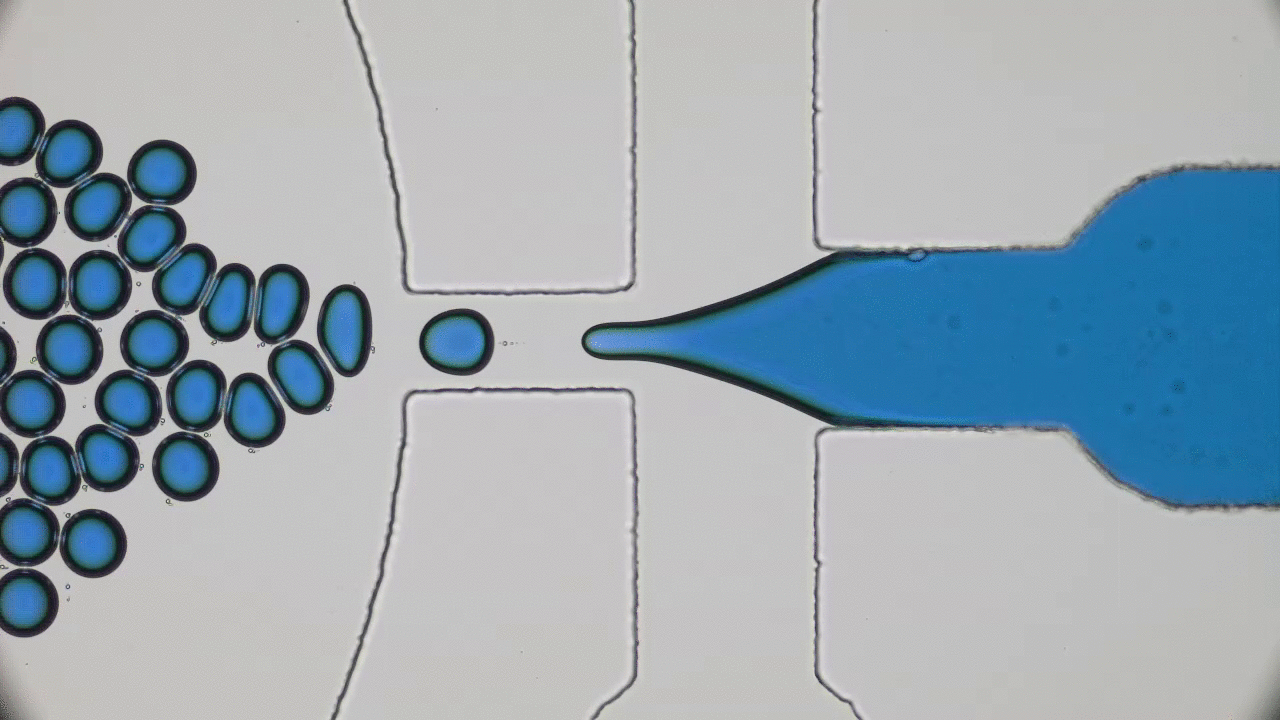In past two decades, several approaches have been developed and optimized to encapsulate a wide variety of materials, from food to cosmetics and the more demanding realm of therapeutic reagents. Inspired by biological cells, the first attempts were to use either natural or synthetic lipid molecules to form encapsulation vessels, i.e., liposomes. Then, with the increasing awareness of controlled release of cargo, especially for therapeutic purposes, advanced materials such as polymers were developed to form carrying vessels. Despite the enormous progress in encapsulation technologies, however, these methods can be limited in their applicability regarding encapsulation efficacy, permeability, mechanical strength, and for biological applications, compatibility.
Water-in-Water Emulsions as Templates for Microcapsules
Emulsions are typically prepared by mixing water and oil. However, emulsions can also be prepared by mixing two or more aqueous solutions containing incompatible polymers under the right conditions. Song and co-workers have developed a method to prepared water-in-water emulsions and used it as template to prepare microcapsules
When Bending Comes at A Cost: Vesicle Formation and Size Distribution
Cells use tiny capsules called vesicles to uptake nutrients, to dump waste, and to communicate. They astonishingly alter the mechanics and size of these capsules that are made of very thin layers with an incredible efficacy and speed. But what are the key parameters that govern the formation of these vesicles?
Color made from structures inspired by bird feathers
There’s a reason why the word “peacock” has become a verb synonymous with commanding attention. Of course the size of the peacock tail is enough to turn heads, but it wouldn’t be nearly as beautiful without its signature iridescent, or angle-dependent, color. The brilliant colors of the peacock come from the interaction of light with the nanoscale structure of the feathers, which is much different from the origin of color in regular dyes and pigments. In today’s paper, Jason Forster and his colleagues in the Dufresne group developed a simple way to make colors that is inspired by the structures in certain bird feathers. To understand how it works, let’s start from the beginning.
Fluids That Flow Themselves
When we think about fluid flow, we generally think of motion in response to some external force: rivers run downhill because of gravity, while soda moves through a straw because of the pressure difference created by sucking on one end. Recently, however, scientists have become interested in a class of fluids that have the capacity to move all by themselves — the so-called “active fluids.” In this paper, Kun-Ta Wu and his co-workers explore how such a material can turn its stored chemical energy into useful work: cargo transport.
Embryonic cell sorting: the living Rubik’s cube
We all started as one single cell. This cell contains all the information to make a complex adult body. Developmental biologists are trying to understand how this cell will first divide to make a dull ball of cells which will then start making dramatic changes in shape to pattern the future organs of the body. One of the difficult questions is how cells that will form the same structure are able to find one another and sort from the mix of other cell types.







